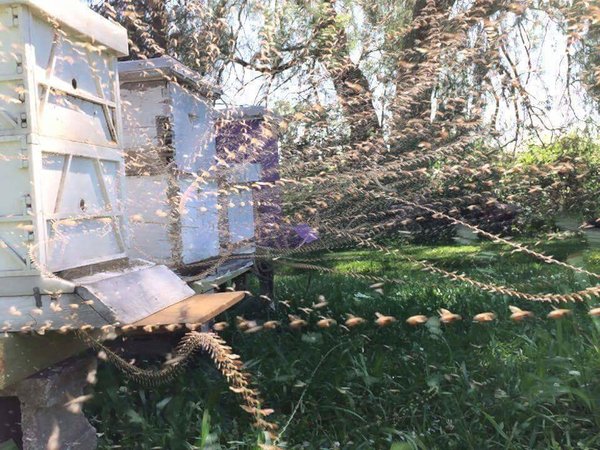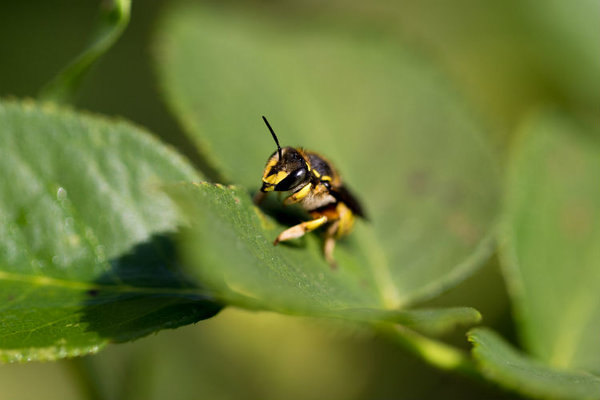Bumblebees are dying all over the world — the United States has even added one species of bee to the endangered species list as of the beginning of 2017. Why are bumblebees dying, and what sort of impact will that have on agriculture?
Colony collapse disorder is one of the main things being blamed for the drop in bumble bee populations. This occurs when the worker bees disappear from a bee hive — the queen and immature bees are left behind, but there are no workers left to collect food.
Without the food resources provided by worker bees, a hive cannot survive, so the immature bees and the queen eventually die off, causing the whole structure of the hive to collapse.
There is no definitive cause for colony collapse disorder, but a number of theories have been entertained including:
- The varroa mite, which invades the hive to feed on the blood of the bees.
- Diseases that affect the bees and/or the hive.
- Fungicides that kill bees.
- Environmental changes like food scarcity or damaged ecosystem.
While the number of hives falling victim to CCD has dropped in recent years, it’s still a concern for beekeepers across the country.
Another observable cause of bee death is exposure to pesticides, specifically the insecticide subgroup known as neonics. This is one of the most commonly used insecticides around the world, and it kills bees along with other insects.
In 2016, the EPA finally admitted to the danger that this type of insecticide poses to the global bee population but backed down on its requested policy changes concerning the use of these chemicals in 2017 after pressure from big pesticide companies. They released a policy rather than a regulation, meaning the companies employing these insecticides on their crops are under no legal obligation to change their ways.
While bees aren’t the only pollinators in the animal kingdom, they are the most prevalent. Other insects, including ants, flies, wasps and butterflies pollinate the plants that they feed from. Vertebrates like bats and birds also carry pollen from plant to plant as they feed.
Many of the fruits and vegetables you enjoy on a daily basis would die off without bees to pollinate them, including:
- Apples, apricots, cherries, coconuts, guava, kiwi, lemons, limes, mangos, peaches, pears and strawberries.
- Avocados, bell peppers, broccoli, brussel sprouts, cauliflower, celery, cucumber, fennel, okra, squash and turnips.
- Herbs and spices: Allspice, caraway, cardamom and coriander.
Even your morning coffee would also be in danger, as coffee plants are pollinated by bees! This is just a small sampling of the plants that could potentially die without the humble bumble bee to pollinate them.

Time lapse of bees traveling to and from the hive.
Other than eliminating the pesticides that are killing our bees, how can you help protect the bees that make our produce section possible?
- Call, don’t spray! Spring is here and you may see swarms of bees congregating on trees, homes or even cars as they search for a new hive. These are young queens questing to find a place to build their first hive. Don’t spray them. Call your local beekeeper who will be more than happy to relocate the bees into a safe hive.
- Plant a bee garden. Butterfly gardens are so last decade — plant a bee-friendly garden instead. Look for plants native to your area, you can talk to your local nursery to get the best ideas, or plant herbs, fruits or vegetables in your garden. Herbs like mint, lavender, sage and marjoram are especially popular with bees because they produce beautiful flowers.
- Bees get thirsty, too. Put a shallow dish of water or a birdbath with stones in it so bees can stop to get a drink without risk of drowning. If you live in an area that’s prone to mosquitoes, make sure you change the water frequently to prevent mosquito larvae from growing.
Bees are an essential part of nearly every ecosystem on the planet. Unless we start to do something now, they will continue to die, and we will be left scrambling to find new ways to pollinate the plants that feed billions of people.
ource: Alstom.com – (c)Alstom/Michael Wittwer

This Women of Green guest blog is by Megan Ray Nichols. Megan writes about many environmental topics including, renewable energy, conservation and sustainability. She invites you to join the discussion on her own blog, Schooled By Science.
Women of Green is TURNING UP THE VOLUME of the feminine voice on the planet in order to create the world we know is possible.
